Building of the Presidium of the National Academy of Sciences of Belarus

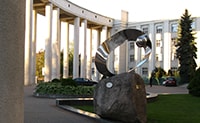
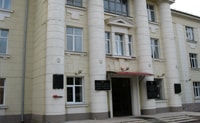


Building of the Presidium of the National Academy of Sciences of Belarus





Honored Scientist of the Redivublic of Belarus (2021).
Laureate of the Prize of the National Academy of Sciences of Belarus in 2018 (the competition is dedicated to the celebration of the 90th anniversary of the Academy of Sciences of Belarus).
This work is on the problem of scattering and absorption of light in ordered structures.
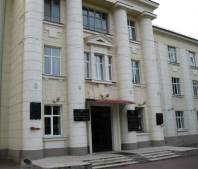

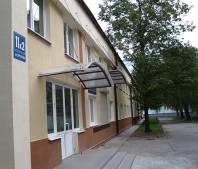
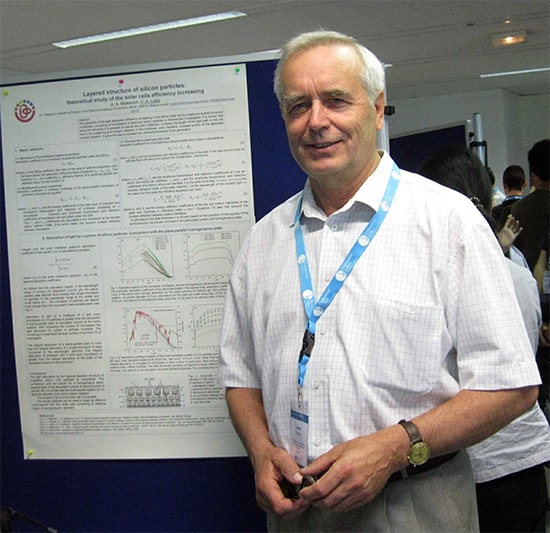
The results are published in two monographs,
eleven book chapters,
670 publications in journals and conference proceedings,
and 19 patents.
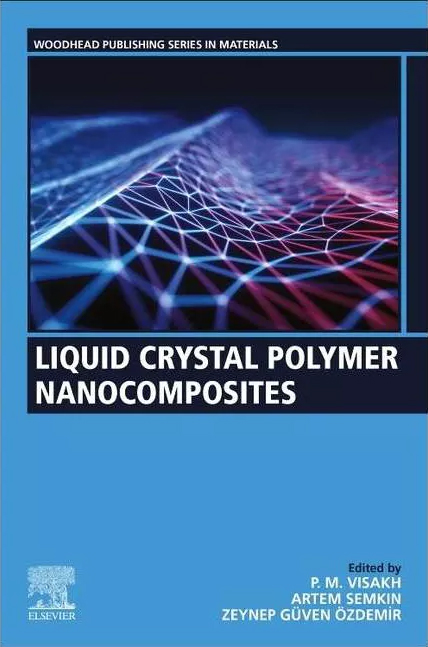 “Liquid crystal polymer nanocomposites”
“Liquid crystal polymer nanocomposites”
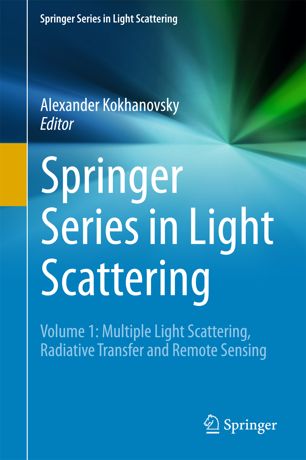 “Multiple Scattering of Light in Ordered Particulate Media” Valery A. Loiko and Alexander A. Miskevich. (2018)
Chapter 2 in the book “Springer Series in Light Scattering”: “Multiple Light Scattering, Radiative Transfer and Remote Sensing” pp. 101-231. Vitrociset Belgium, Darmstadt Germany.
“Multiple Scattering of Light in Ordered Particulate Media” Valery A. Loiko and Alexander A. Miskevich. (2018)
Chapter 2 in the book “Springer Series in Light Scattering”: “Multiple Light Scattering, Radiative Transfer and Remote Sensing” pp. 101-231. Vitrociset Belgium, Darmstadt Germany.
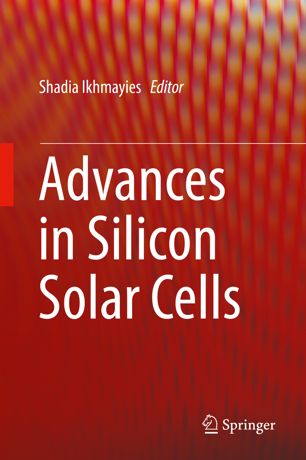 Chapter in the book “Advances in Silicon Solar Cells.” Ikhmayies, S.J. (Ed.) (2018). Springer.
Alexander A. Miskevich, Valery A. Loiko. “Absorption by Particulate Silicon Layer: Theoretical Treatment to Enhance Efficiency of Solar Cells”. Pages 53-107.
Chapter in the book “Advances in Silicon Solar Cells.” Ikhmayies, S.J. (Ed.) (2018). Springer.
Alexander A. Miskevich, Valery A. Loiko. “Absorption by Particulate Silicon Layer: Theoretical Treatment to Enhance Efficiency of Solar Cells”. Pages 53-107.
 Berdnik V. V., Loiko V. A. Neural networks for particle parameters retrieval by multiangle light scattering. Chapter 7 in “Light Scattering Review10: Light Scattering and Radiative Transfer”, ed. A. A. Kokhanovsky. Praxis Publishing Chichester, UK. Springer, Springer-Verlag Berlin, Heidelberg. 2016. p. 291– 340.
Berdnik V. V., Loiko V. A. Neural networks for particle parameters retrieval by multiangle light scattering. Chapter 7 in “Light Scattering Review10: Light Scattering and Radiative Transfer”, ed. A. A. Kokhanovsky. Praxis Publishing Chichester, UK. Springer, Springer-Verlag Berlin, Heidelberg. 2016. p. 291– 340.
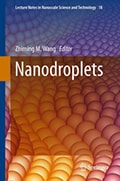 Loiko V. A. Polymer Films with Nanosized Liquid-Crystal Droplets: Extinction, Polarization, Phase, and Light Focusing. Сhapter 9 in “Nanodroplets” ed. Z. M. Wang. Springer. New York, Heidelberg, Dordrecht, London. 2013. P. 195-235.
Loiko V. A. Polymer Films with Nanosized Liquid-Crystal Droplets: Extinction, Polarization, Phase, and Light Focusing. Сhapter 9 in “Nanodroplets” ed. Z. M. Wang. Springer. New York, Heidelberg, Dordrecht, London. 2013. P. 195-235.
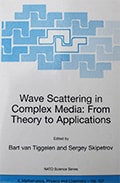 Loiko V.A., Berdnik V.V. Light scattering in a disperse layer with partially ordered soft particles // Proceed. NATO ASI. Wave scattering in complex media: from theory to applications, eds. B. Van Tiggelen, S. Skipetrov. Kluwer Academic Publishers. Printed in Netherlands.2003. Series II. P. 535-551.
Loiko V.A., Berdnik V.V. Light scattering in a disperse layer with partially ordered soft particles // Proceed. NATO ASI. Wave scattering in complex media: from theory to applications, eds. B. Van Tiggelen, S. Skipetrov. Kluwer Academic Publishers. Printed in Netherlands.2003. Series II. P. 535-551.
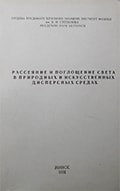 Loiko V.A. Methods of optical scattering media to study photolayers // Scattering and absorption of light in the natural and artificial dispersion mediums, Minsk. Ed. A.P. Ivanov. 1991, p. 355-377. (in Rus.)
Loiko V.A. Methods of optical scattering media to study photolayers // Scattering and absorption of light in the natural and artificial dispersion mediums, Minsk. Ed. A.P. Ivanov. 1991, p. 355-377. (in Rus.)
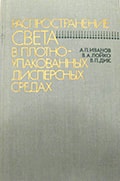 Ivanov A.P., Loiko V.A., Dick V.P. Light propagation in closely packed dispersed media. Nauka i Tekhnika, 1988, 191 p. (in Rus.)
Ivanov A.P., Loiko V.A., Dick V.P. Light propagation in closely packed dispersed media. Nauka i Tekhnika, 1988, 191 p. (in Rus.)
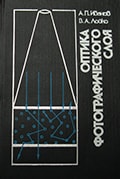 Ivanov A.P., Loiko V.A. Optics of a photographic layer. Nauka i Tekhnika, 1983, 303 p. (in Rus.)
Ivanov A.P., Loiko V.A. Optics of a photographic layer. Nauka i Tekhnika, 1983, 303 p. (in Rus.)
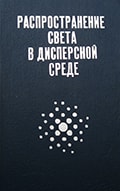 Ivanov A.P., Andreev Y.B., Kazakov S.N., Loiko V.A. Application of optical scattering media methods for photographic films // in “Propagation of light in a dispersion medium”. Minsk, Science and Technology, edited by A.P. Ivanov. 1982, p. 258-275. (in Rus.)
Ivanov A.P., Andreev Y.B., Kazakov S.N., Loiko V.A. Application of optical scattering media methods for photographic films // in “Propagation of light in a dispersion medium”. Minsk, Science and Technology, edited by A.P. Ivanov. 1982, p. 258-275. (in Rus.)
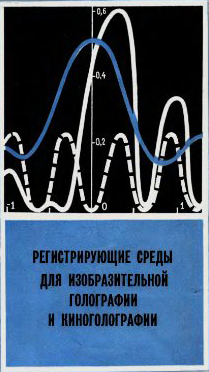 “Recording media for imaging holography and film holography”
Loiko V.A., Ivanov A.P. Characteristic curve of finely dispersed silver halide photographic material. p.198-207 in “Recording media for imaging holography and film holography”. Sobolev G.A. (ed.). Leningrad: Nauka, 1979. - 238 p.
“Recording media for imaging holography and film holography”
Loiko V.A., Ivanov A.P. Characteristic curve of finely dispersed silver halide photographic material. p.198-207 in “Recording media for imaging holography and film holography”. Sobolev G.A. (ed.). Leningrad: Nauka, 1979. - 238 p.
...
Enhancement of the performance of photovoltaic cells through increasing light absorption due creation of particulate structure of active layer is investigated.
We simulated spectral and integrated over the terrestrial solar spectral irradiance “Global tilt” ASTM G173-03 absorption coefficient.
In the wavelength range of small absorption index of c-Si (0.8-1.12μm) the integral absorption coefficient of the particulate monolayer can be more than 20 times higher than the one of the plane-parallel plate of the equivalent volume of material. In the overall considered range (0.28-1.12μm) the enhancement factor up to ~1.45 for individual monolayer is observed.
Maximum value of the spectral absorption coefficient approaches unity for multilayers consisting of large amount of sparse monolayers of small particles.


One of the possible realizations of the solar cell based on gradient multilayer of active layer is presented schematically below.

The integral absorption coefficient of the consentration- and size-gradient multilayer for the multilayer composed of seven monolayers can be more than 40% greater than the one of the "non-gradient" system.
The considered particulate structures of active layer are promising for creation of the high efficiency thin-film solar cells.
Miskevich A. A., Loiko V. A. Light absorption by a layered structure of silicon particles as applied to the solar cells: theoretical study // Journal of Quantitative Spectroscopy & Radiative Transfer. – 2014. – Vol. 146, – P.355–364.
Miskevich A. A., Loiko V. A. Solar cells based on particulate structure of active layer: Investigation of light absorption by an ordered system of spherical submicron silicon particles // Journal of Quantitative Spectroscopy & Radiative Transfer. –2015, –V.167, –P. 23–39. http://dx.doi.org/10.1016/j.jqsrt.2015.08.003
Miskevich AA, Loiko VA, Inventors. B.I. Stepanov Institute of Physics of NAS of Belarus, assignee. Photocell. Russian Federation patent RU 2491681; 2012 March 11.
The model to describe coherent transmission and reflection coefficients of monolayers is proposed. The features in transmittance interference minima of the monolayers with short- and long-range order are described.
On the spectrum of monolayer with short-range ordering (partially-ordered), the minimum corresponds to the maximum of the extinction efficiency factor. For a monolayer with the long-range ordering (regularly-packed), a similar minimum takes place. The spectrum for the regularly-packed monolayer has an additional sharp coherent transmittance minimum (and the coherent reflection maximum), which is due to the periodicity in particles locations. These extremes occur at wavelengths comparable to the particle sizes and the distances between them.
The developed technique allows one to analyze the coherent transmittance and reflectance of the imperfect 2D planar photonic crystals.



The photonic band gap for multilayers consisting of close-to-regularly-packed monolayers (planar photonic crystals with imperfect lattice) and partially-ordered monolayers of particles are investigated using the transfer matrix method.

The transmission spectra of multilayer structures (multilayers) have three types of sharp minima due to interference of waves. Their position and size are determined by the concentration, size, optical constants of the particles, the regularity of their arrangement in the plane of the monolayer, the period of the layered structure and the thickness of multilayers. The illustration is given in Fig.5.

Some data for coherent transmittance and reflectance spectra of a system consisting of a glass plate coated with monolayers of spherical alumina particles are shown below. Creation of antireflection coatings does not need high ordering in particle locations. Otherwise, the arrangement of particles in monolayer plays a crucial role for selective reflectors and transmission filters. The reflection coefficient of a glass plate can be significantly reduced by using two-sided coating with monolayers of alumina particles.


Comparison the results obtained by the developed model and the known experimental data for the photonic band gap.

The results can be used to optimize antireflection coating, diffuses, neutral and spectral filters of the transmitted and reflected light. The proper layer characteristics are determined. The results can be used to estimate the degree of ideality of the photonic crystal arrangement by the data on spectral dependences of the coherent transmission and reflection coefficients, retrieve characteristics of the ordered particulate structures, etc.
Loiko V. A., Miskevich A. A. Coherent Transmission and Reflection Spectra of Ordered Structures from Spherical Alumina Particles // Optics and Spectroscopy. – 2013, – V. 115, No. 2, - p. 274–283.
Miskevich A. A., Loiko V. A. Layered periodic disperse structures of spherical alumina particles // Journal of Quantitative Spectroscopy & Radiative Transfer. –2014. –V.136. – P.58-70. http://dx.doi.org/10.1016/j.jqsrt.2013.05.013.
A method to retrieve parameters of spherical particles arranged into ordered structures by the coherent transmittance spectra is proposed. It is based on the solution of the inverse problem using data on the photonic band gap. The solution has been obtained within the quasicrystalline approximation of the multiple wave scattering theory and the transfer matrix method.


Miskevich A. A., Loiko V. A. Method for Retrieving the Refractive Index of Ordered Particles from Data on the Photonic Band Gap // Journal of Experimental and Theoretical Physics, – 2014, – Vol. 119, No. 2, – P. 211–226.
Miskevich A. A., Loiko V. A. Three-dimensional ordered particulate structures: method to retrieve characteristics from photonic band gap data. // Journal of Quantitative Spectroscopy and Radiative Transfer. – 2015, –V.151, –P. 260-268.
Miskevich A.A., Loiko V.A., Inventors. B.I. Stepanov Institute of Physics of NAS of Belarus, assignee. Method to determine refractive index of particles forming мultilayered ordered structure (optional). Russian Federation patent RU 2550159 C2; 2013 Aug. 20.
The features of anomalous light scattering in a layer containing ordered optically soft particles are described.
Simulations disclose that in the layer with two-layered subwavelength-sized particles the bleaching and darkening effects can be implemented. In the first case transmittance increases while in the second case transmittance decreases with volume concentration.

The results show the way to optimize characteristics of the transmission filters for visible and infrared spectral regions.

The developed model can be used for light scattering description in liquated glasses, filled liquid crystals, polymer-filled nematics, optical filters, paints, etc.
Berdnik V.V. and Loiko V. A.. Light scattering by ensemble of nonabsorbing correlated two-layered particles: specific feature for spectral dependence of extinction coefficient // Applied Optics. –2011, –V.50, –№.21.–P. 4246-4251.
Loiko V. A., Berdnik V. V. Light Scattering in a Layer of correlated optically soft particles // Optics and Spectroscopy. – 2006, – Vol. 101, No. 2, P. 303–308.
Berdnik V. V., Loiko V. A. Angular structure of radiation scattered by a disperse layer with a high concentration of optically soft particles // Quantum electronics. – 2006. - Vol. 36, № 11. – P. 1016– 1022.
This is the result of the interference between incident and forward-scattered waves.
At the Single-Scattering Approximation (SSA) coherent transmittance is zero if the following conditions are fulfilled:
L=0.5 and η=2/Q.
Here η - is the filling coefficient of the monolayer, Q is the extinction factor of particle, parameter L is determined by an amplitude scattering function. The effect takes place for monodisperse and polydisperse systems and systems when multiple scattering in the monolayer is essential as well. In that cases the conditions are changed.
The characteristics particles and their concentration to obtain zero coherent transmittance are shown in Fig. The calculations are fulfilled for homogeneous monodisperse spherical nonabsorbing particles at the SSA. The proper values of size parameters x=πd/λ (d is the particle diameter, λ is the wavelength) and filling factors η of the monolayer are indicated as x0 and ηo.


Values of refractive index (n), size parameters (x0), and filling coefficient (ηo) at which coherent transmittance T=0.
The results can be used to optimize characteristics of scattering and absorption by a monolayer and a slab of monolayers; to create scattering and rejection spectral transmission filters, tunable filters, etc.
Ivanov A.P., Loiko V.A., Dick V.P. Features in coherent transmittance of a monolayer of particles //JOSA A. – 2000. – No. 11. – P. 2040-2045.
Loiko V.A., Konkolovich A.V. Interference effect of coherent transmittance quenching: theoretical study of optical modulation by surface ferroelectric liquid crystal droplets // J. Phys. D: Appl. Phys. – 2000. - Vol. 33. – P. 2201-2210.
Konkolovich A.V., Loiko V.A., Presnyakov V.V., Zyryanov V.Ya. The interference blanking of the light passing through the monolayer film of polymer-encapsulated nematic liquid crystals // JETP Lett. – 2000. – V. 71, № 12. – S. 710-713.
Electrically controllable (tunable) spectral filters make it possible to control spectral composition of electromagnetic radiation and considerably simplify the design of electrooptical instruments. Using these filters it is possible create simple and highly functional optical devices and instruments with new service properties.
One way to solve this problem is to use dispersion of small particles in liquid crystal. The dispersion is placed between two parallel substrates, which are transparent for radiation to be filtered and coated with transparent electrodes. The filter is based on the Christiansen effect.
We proposed a technique to calculate characteristics of the filters.


Dick V. P. and Loiko V. A. Transmission Spectra of Tunable Dispersion Filters of the Type of Small Particles–Liquid Crystal // Optics and Spectroscopy. – 2014, – Vol. 117, No. 1, – P. 111–117.
We have shown that, for the Polymer Dispersed Liquid Crystal (PDLС) films containing liquid crystal droplets with inhomogeneous boundary conditions, the angular structure of the scattered light can be asymmetric with respect to the polar scattering angle.


The figures below illustrate the asymmetry of the angular distribution of transmitted radiation over the polar scattering angle.

The angular structure of the scattered light is asymmetric with respect to the polar angle. This asymmetry is most pronounced at W= 50%, i.e., at equal fractions of the tangential and normal boundary conditions at the droplet surface.

This effect can be used, for example, to create new types of displays for automatic cash terminals.
Loiko V.A., Zyryanov V.Ya., Maschke U., Konkolovich A.V., Miskevich A.A. Small-angle light scattering and transmittance of polymer film, containing liquid crystal droplets with inhomogeneous boundary conditions // Journal of Quantitative Spectroscopy & Radiative Transfer. – 2012. –V.113. – P.2585-2592.
An optical model for the effect of field-induced transient scattering in ferroelectric liquid crystals is proposed. Scattering processes are described by introducing an optically anisotropic matrix where transient domains (scatterers) are generated. The results are obtained for a plane parallel layer of ferroelectric liquid crystals with a planar helicoidal structure under normal illumination with a linearly polarized plane wave.


The results can be useful at 3D volumetric and 2D liquid crystal displays development.
Loiko V. A., Konkolovich A. V., Miskevich A. A. Optical Model of Transient Light Scattering in Ferroelectric Liquid Crystals // Journal of Experimental and Theoretical Physics, -2009, - Vol. 108, No. 3, – p. 535–545. http://link.springer.com/article/10.1134/S1063776109030169
Loiko V.A., Konkolovich A.V., Miskevich A.A. Transient light scattering in helix ferroelectric liquid crystal cells // Liquid Crystals. – 2009. – Vol. 36, No.4. – P. 365-370.
The models to describe extinction and polarization state of light transmitted through a polymer-dispersed liquid-crystal (PDLC) film with nanosized, spherical, nonabsorbing nematic droplets are created.
Scattering properties of a single droplet are described by the Rayleigh–Gans approximation. Propagation of coherent light field is described in the frame of the Foldy–Twersky theory. The concept of multilevel order parameters is used. Equations for extinction coefficients, phase shift, and polarization of transmitted light for layers with random and oriented droplets are written and discussed. Conditions for circular and linear polarization of light are determined. Polarization-independent focusing of light is investigated.


Figure 3 shows the focal length plotted versus the normalized applied field En for the combined lens.

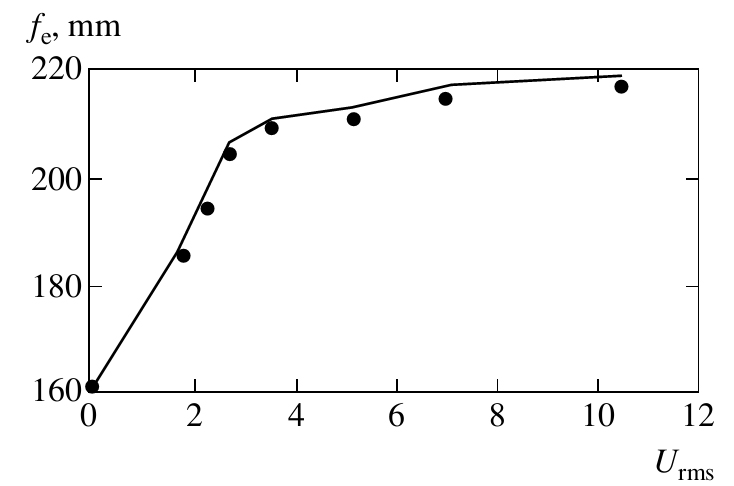
The results obtained can be used to design devices for light modulation based on composite liquid crystal materials: optical filters, polarizers, phase plates, polarization plane rotators, and lenses with variable focal lengths.
Loiko V. A. Polymer Films with Nanosized Liquid-Crystal Droplets: Extinction, Polarization, Phase, and Light Focusing. Сhapter 9 in “Nanodroplets” ed. by Z. M. Wang. Springer. New York, Heidelberg, Dordrecht, London. 2013. P. 195-235.
Loiko V. A., Konkolovich A. V. Focusing of Light by Polymer-Dispersed Liquid-Crystal Films with Nanosized Droplets // Journal of Experimental and Theoretical Physics. – 2006, – V. 103, No. 6, – P. 935–943.
Lisinetskaya P. G., Konkolovich A. A., Loiko V.A. Polarization properties of polymer dispersed liquid crystal film with small nematic droplets // Applied optics. – 2009. –Vol.48, No.17. – P. 3144-3153.
Polymermethacrylate (PMMA) and polyvinyl butyral (PVB) thin films with the dispersed liquid crystal droplets are obtained by the solvent-induced phase separation method.
The use of PVB as a polymer matrix enables one to obtain absolutely transparent (with no scattering of visible light) film. The value of the phase shift linearly depends on the voltage of applied electric field. It can reach 4 radians at the applied electric field voltage of about 20V/μm
The material can be applied for - displays, electro-optical modulation of the intensity and phase of the wave, creation of electrically switchable optical elements of the visible and infrared radiation, optical communication lines, flat lenses and other optical elements.
Photos below illustrate the change in the transmission cell designed for phase modulation.
Two limiting cases: field-off (1) and field-on (2) are displayed.


Dmitriev S.M., Dick V.P., Kostyuk N. N., Dick T.А., Loiko V.А. Experimental studies of light-wave phase shift by polymer dispersed liquid crystal films // Semiconductor physics, quantum electronics and optoelectronics. –2010. –V.13, No.2. – P. 132-136.
The retrieval of characteristics of particles and their concentration is one of the most important problems in ecology, medicine, electronics, photonics, etc.
The characteristics of particles can be retrieved by information on the angular structure of scattered light. This is a “fingerprint” of the particle. The “one by one” regime of measurement is often used. In such a case the large amount of particles is measured in a squeezed time. To retrieve particle characteristics the neural networks method is used. The advantage of this method is a high speed. It admits determination of particle characteristics in a real-time scale.
In the scanning flow cytometry the operation is based on analysis of light, scattered by cells flying with a high rate (up to 5000 cells per second). A set of variants of the neural networks is created by us. One of them is high order correlation neural networks. For example the errors of retrieval of radius R, real, imaginary and imaginary k parts of refractive index by a four-point single-level correlation neural network at k<0.03 do not exceed 0.1 μm, 0.02, and 0.003, respectively (for particles with 0.6mkm <R < 10.6 μm, 0<k<0.03, and refractive index 1.02<n<1.38.
The possibility to retrieve parameters of spherical homogeneous nonabsorbing particles by information on intensity of light scattered in one, two and three angles from the angular range from 10° to 170° is investigated and the proper networks are created. We considered aerosol particles with refractive index ranging from 1.3 to 1.7. It is shown that the use of polychromatic radiation helps to smooth out dependence of the intensity of the scattered light on the refractive index and increase significantly the retrieval accuracy.


The results which illustrate sizing of spheroidal and cylindrical particles in a binary mixture are shown below
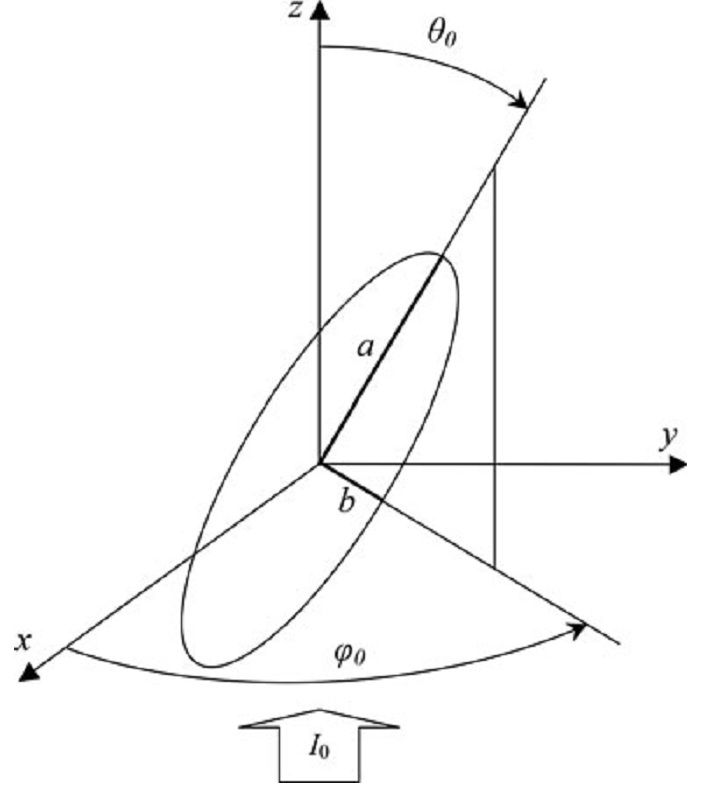
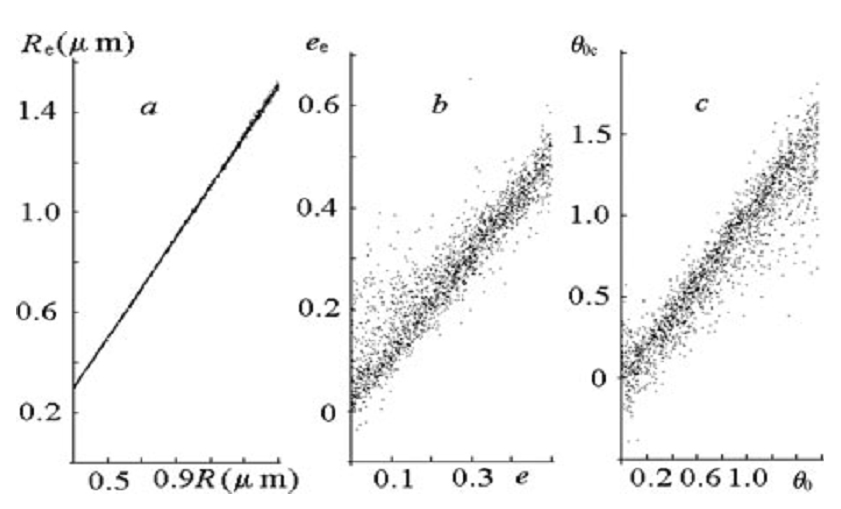
Berdnik V. V., Loiko V. A. Neural networks for particle parameters retrieval by multiangle light scattering. Chapter 7 in “Light Scattering Review10: Light Scattering and Radiative Transfer”, ed. by A. A. Kokhanovsky. Praxis Publishing Chichester, UK .Springer, Springer-Verlag Berlin, Heidelberg. 2016. p. 291– 340.
Berdnik V., Mukhamedyarov R., Loiko V. Characterization of optically soft spheroidal particles by multi-angle light scattering data using the neural networks method // Opt. Lett. – 2004. - Vol. 29. - P. 1019-1021.
Berdnik V., Loiko V., Gilev K., Shvalov A., Maltsev V. Characterization of spherical particles using high-order neural networks and scanning flow cytometry // Journal of Quantitative Spectroscopy & Radiative Transfer. – 2006. –Vol. 102. – P. 62-72.
Loiko V.A., Berdnik V. V. Retrieval of size and refractive index of spherical particles by multi-angle light scattering the neural networks method application // Applied optics. – 2009. –Vol.48, No.32. – P. 6178-6187.
Quantitative data on cell structure, shape, and size distribution are obtained by optical measurement of normal peripheral blood granulocytes and lymphocytes in a cell suspension are obtained. The cell nuclei are measured in situ. The distribution laws of the cell and nuclei sizes are estimated. The data gained are synthesized to construct morphometric models of a segmented neutrophilic granulocyte and a lymphocyte.
Models of interrelation between the cell and nucleus metric characteristics for granulocyte and lymphocyte are created. The discovered interrelation decreases the amount of cell-nucleus size combinations that have to be considered under simulation of cell scattering patterns. It allows faster analysis of light scattering to discriminate cells in a real-time scale.
Our morphometric data meet the requirements of scanning flow cytometry dealing with the high rate analysis of cells in suspension. The findings can be used as input parameters for the solution of the direct and inverse light-scattering problems in scanning flow cytometry, dispensing with a costly and time-consuming immunophenotyping of the cells, as well as in turbidimetry and nephelometry.


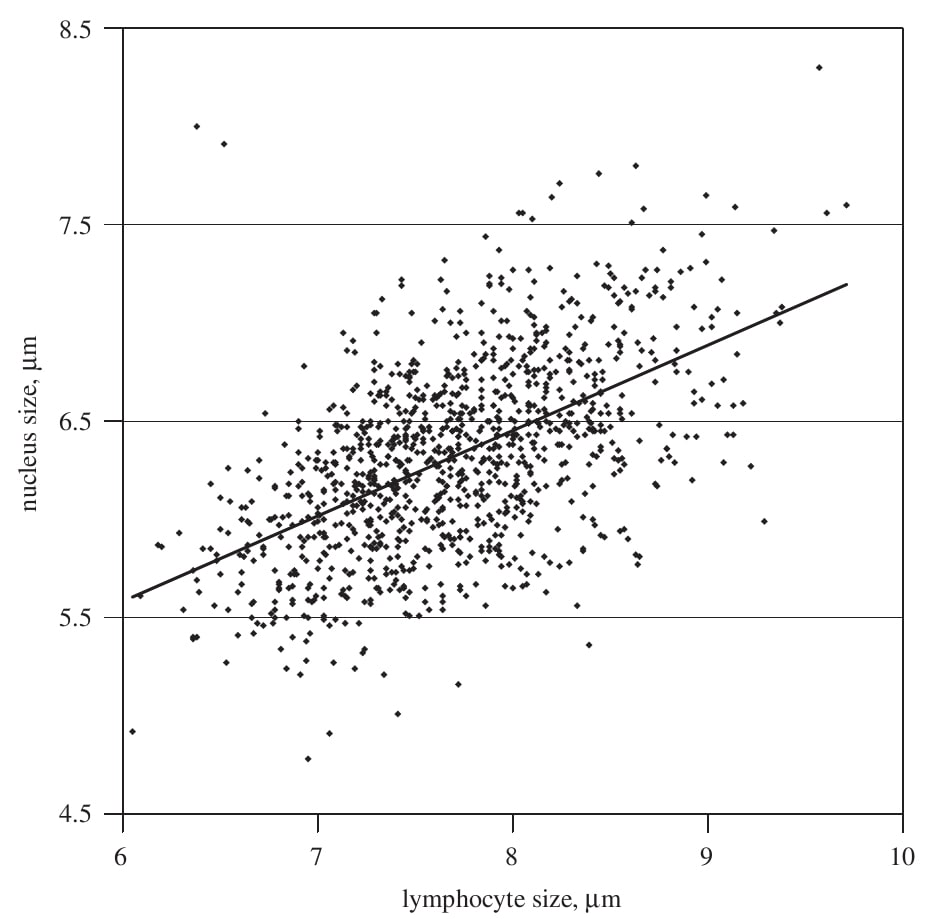
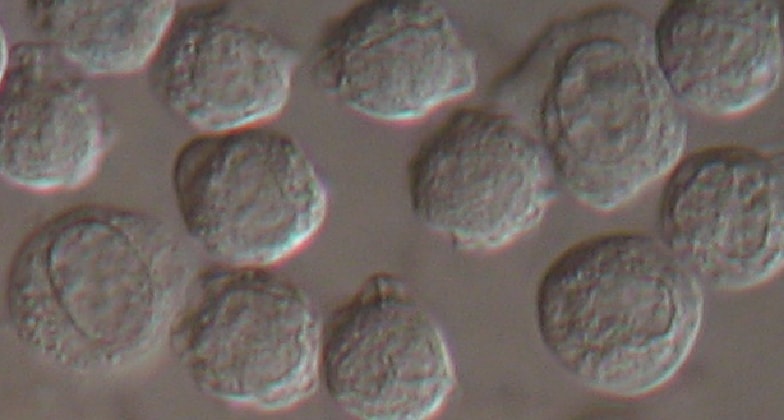
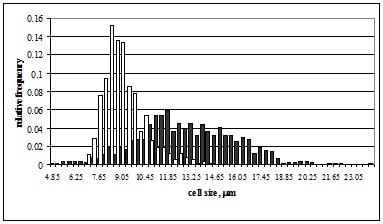
The cell models developed can contribute to theoretical grounding of cell discrimination and diagnosis methods. These models make it possible to establish relationships between the cell structure and the angular pattern of scattered light to determine dominant and secondary origins of light scattering by a cell. This can provide background for better biological and medical interpretations of the scattering patterns, to improve discriminating and diagnostic capabilities of immunophenotyping-free scanning flow cytometry.
The findings show that it is possible to screen individuals of risk groups by the immunophenotyping-free scanning flow cytometry for inexpensive and rapid provisional detecting of persons suspected as infected with some viruses.
Mononuclear size distributions (MSDs) are proposed to use as a criterion of additional information for diagnostics and monitoring of acute leukemia.
Loiko V.A., Ruban G.I., Gritsai O.A., Gruzdev A.D., Kosmacheva S.V., Goncharova N.V., Miskevich A.A. Morphometric model of lymphocyte as applied to scanning flow cytometry // Journal of Quantitative Spectroscopy & Radiative Transfer. – 2006. - Vol. 102. - P. 73-84.
Ruban G.I., Kosmacheva S.M., Goncharova N.V., Van Bockstaele D., Loiko V.A. Investigation of morphometric parameters for granulocytes and lymphocytes as applied to a solution of direct and inverse light scattering problems // Journal of Biomedical Optics. – 2007. – Vol. 12 (4). – P. 044017-1-044017-11.
Ruban G.I., Berdnik V.V., Goncharova N.V., Marinitch D.V., Loiko V.A. Light scattering and morphology of the lymphocyte as applied to flow cytometry for distinguishing healthy and infected individuals // Journal of Biomedical Optics. 2010. –V.15, No.5. – P. 11-19.
Ruban G. I., Goncharova N. V., Marinitch D. V., and Loiko V. A. Size distribution of mononuclears as marker of acute leukemia // International Journal of Advance in Medical Science. –2015, – Vol. 3, No I. P.1-11. doi:10.12783/ams.2015.0301.01.